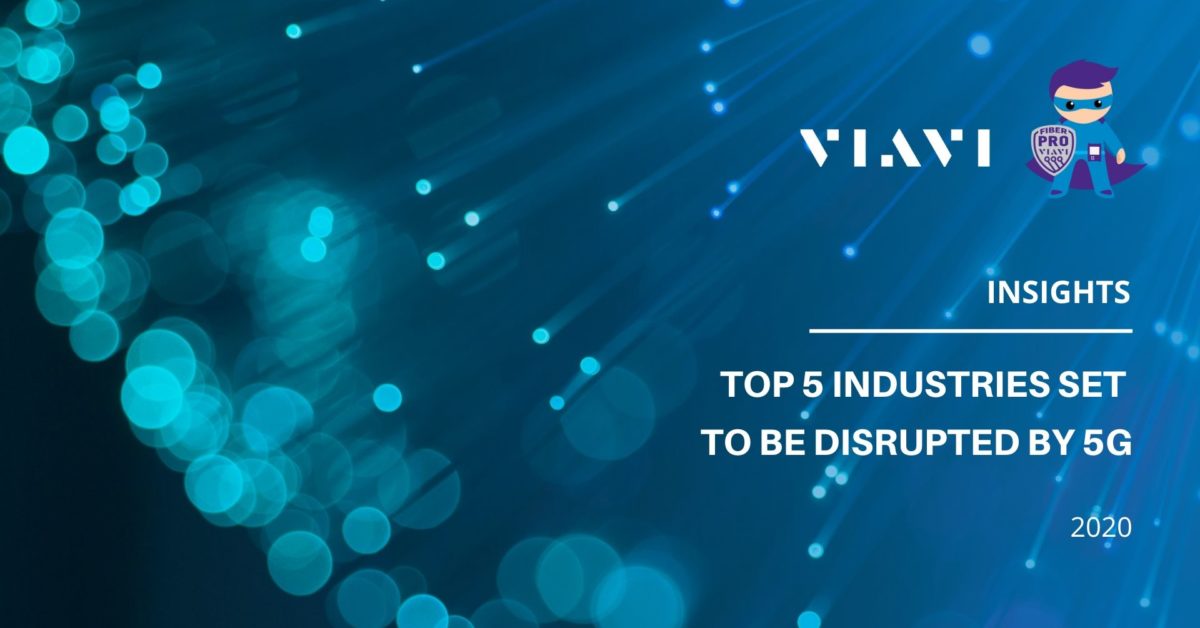Top 5 industries set to be disrupted by 5G

With 5G becoming more and more readily available, a number of industries are set to be positively impacted, primarily due to 5G’s low latency and high speed characteristics. The following are the top five industries which are set to experience major developments as 5G continues to be deployed.
Transportation
Transportation has already seen major changes within the last few decades, however, the implementation of 5G is set to revolutionise the industry. Vehicle-to-vehicle or vehicle-to-infrastructure communication, advanced driver-assist systems (ADAS) and self-driving technology are just a few of the proposed plans that the transport industry are expected to adopt with the execution of 5G.
Vehicle-to-vehicle (V2V) is the wireless exchange of data between vehicles regarding their speed, location and direction. Essentially, V2V communication allows vehicles to send and receive omni-directional messages (up to 10 times per second) which as a result, creates 360 degree awareness to other vehicles within range. Vehicles that have been integrated with the appropriate technology are able to receive these messages to avoid potential crash threats as they occur. Whereas, Vehicle-to-Infrastructure (V2I) is the wireless exchange of data between vehicles and road infrastructure. V2I uses the same concept and technology as V2V except that the communication is transferred to infrastructure (such as traffic lights) rather than nearby vehicles.
It is no lie that as the population increases, so does the number of drivers and vehicles on the roads. Innovative technology is needed to improve roadways as well as the mobility and safety surrounding transport. Vehicle-to-infrastructure will see the emergence of new technologies such as smart signs (that can respond and change depending on circumstances) as well as advanced road markings and pavement lane markings, which can adapt to the weather conditions to ensure that they remain visible at all times.
The need for both vehicle-to-vehicle and vehicle-to-infrastructure technology is prominent and with the growth of 5G, the transport industry is expected to implement such technology. Although 5G is not essential in their success, 5G will certainly help in ensuring that they are integrated smoothly due to 5G’s low latency and large bandwidth characteristics. Furthermore, the high – speed attributes of 5G will assist in the testing of self-driving car testing which will change the industry completely.
Manufacturing
It is predicted that 5G will increase both safety and productivity measures within the manufacturing industry. Smart equipment / factory automation (using machine learning and artificial intelligence) will be able to function at a faster rate, heightening the work load completed, whilst minimising safety risks that may be present if completed by manufacturing workers. Real-time machine maintenance will also be a large area to expand, minimising any down time that may have been present in the past (therefore heightening productivity levels). Whilst such technology may already be in use, 5G will just enhance the functionality of these processes, making business easier for those within the industry.
Healthcare
Healthcare is another industry that is expected to experience a dramatic shift with the growth of 5G. Remote surgery is one of the biggest areas that will see growth as 5G promises to remove the previous issues of lag time (which can have life threatening consequences as patients lives are at risk). Remote surgery was almost non-existent under the 4G network, however, the improved latency time of 5G is reduced to almost 2 milliseconds between devices, providing surgeons with the opportunity to perform high-risk surgery on patients, despite the fact that they may be thousands of kilometres away.
With the shift of how society goes about their everyday lives (in relation to how the internet and online world is heavily involved), the practice of telemedicine is growing. 5G will enable health professionals to connect with patients in rural areas who may not have the ability to travel. Telemedicine will also be useful for those who are time poor as well as medical professionals who wish to communicate with others within the industry on an international level. Whilst these options are available under the 4G network, the reliability factor is lacking due to the networks capabilities (such as lack of bandwidth and latency issues). 5G is anticipated to be equipped to handle these bandwidth issues as well as any other demands that the healthcare industry is needing.
In-home monitoring is another area that is set to erupt with 5G. High-risk patients may soon be given the opportunity to wear special sensors that allows hospitals to track their progress (whilst remaining in the comfort of their own home), just as they would if they were an in-house patient at the hospital. 5G will ensure that the doctors are notified immediately if any problems occur.
Energy & Utilities
5G will assist in improving the communication and overall connectivity between major energy and utility industries (such as oil, gas and electricity). As these industries are heavily reliant upon major infrastructure, 5G may see new technology that enables smarter processes to improve energy production, usage and storage whilst minimising the impact it has on the natural environment (such as solar electricity).
Media & Entertainment
The media and entertainment industry has already seen progressive changes in regards to technology such as virtual reality (VR) and augmented reality (AR). 5G will enhance the viewer’s experience when using such platforms due to better video quality and download / streaming speed time. In fact, 5G is expected to be 100 times faster than 4G, with 50 times lower latency and 100 times more network capacity. 5G can also be expected to drive the rise of 360-degree videos, 3D holograms as well as live 3D videos via personal mobile devices.
5G will soon become an enabler for new products and services to enter a plethora of industries that couldn’t before due to latency limitations. With the ability to conduct 5G testing on all key wireless, cellular, and IP technologies worldwide, VIAVI solutions ensure networks are robust enough to cope with the complexity and demands of devices and traffic at scale by validating the impact of real-life conditions across the entire network, testing subscribers’ quality of experience.



